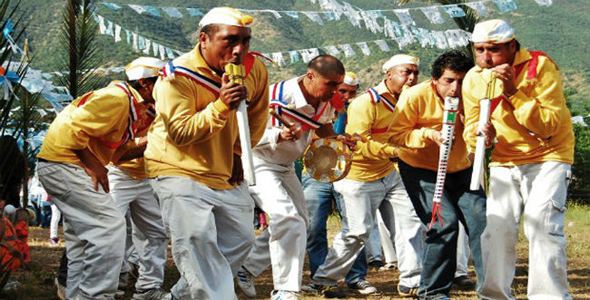The Bailes Chinos become the first intangible heritage that UNESCO has recognized in Chile.
The Bailes Chinos, a religious-musical practice prevailing for over 400 years, has become the first intangible heritage that UNESCO has recognized in Chile. The dance shows the cultural diversity of a country whose influences come from two traditions: the Hispanic through brotherhoods and music together with the dances of the local natives.
UNESCO has highlighted the great popular devotion that the Bailes Chinos produce, constituting a social integration model, that bring together almost all the local communities, with a strong sense of identity and solidarity. The dances are "chinos" ("Chinese" in Spanish) because that is how "server" is said in Quechua, a concept utilized to call the Virgin "servers".
The groups that perform these dances are called brotherhoods and it is calculated that there are about 60 of them between the north and center area of our country. Their dances express their devotion to the Virgin in numerous religious celebrations, mixing jumps and squats that must be executed while playing a long flute called Pifilkas, originally pre-Colombian.
This is the first time that the UNESCO selects a Chilean cultural expression to become a part of the World Heritage list. In the material area, Chile already has six places: The Churches of Chiloe, Valparaiso, the Santa Laura and Humberstone Saltpeter Works, Sewell Mining Town, Rapa Nui National Park and Qhapac Ñan (The Inca Trail or Andean Road System, together with five other countries and declared five months ago).
The UNESCO also recognized other cultural expressions in South America that have become a World Heritage as of this year: Capoeira in Brazil and the yampara dances from Pujllay and Ayarichi in Bolivia.
